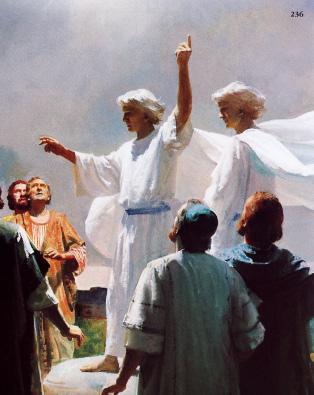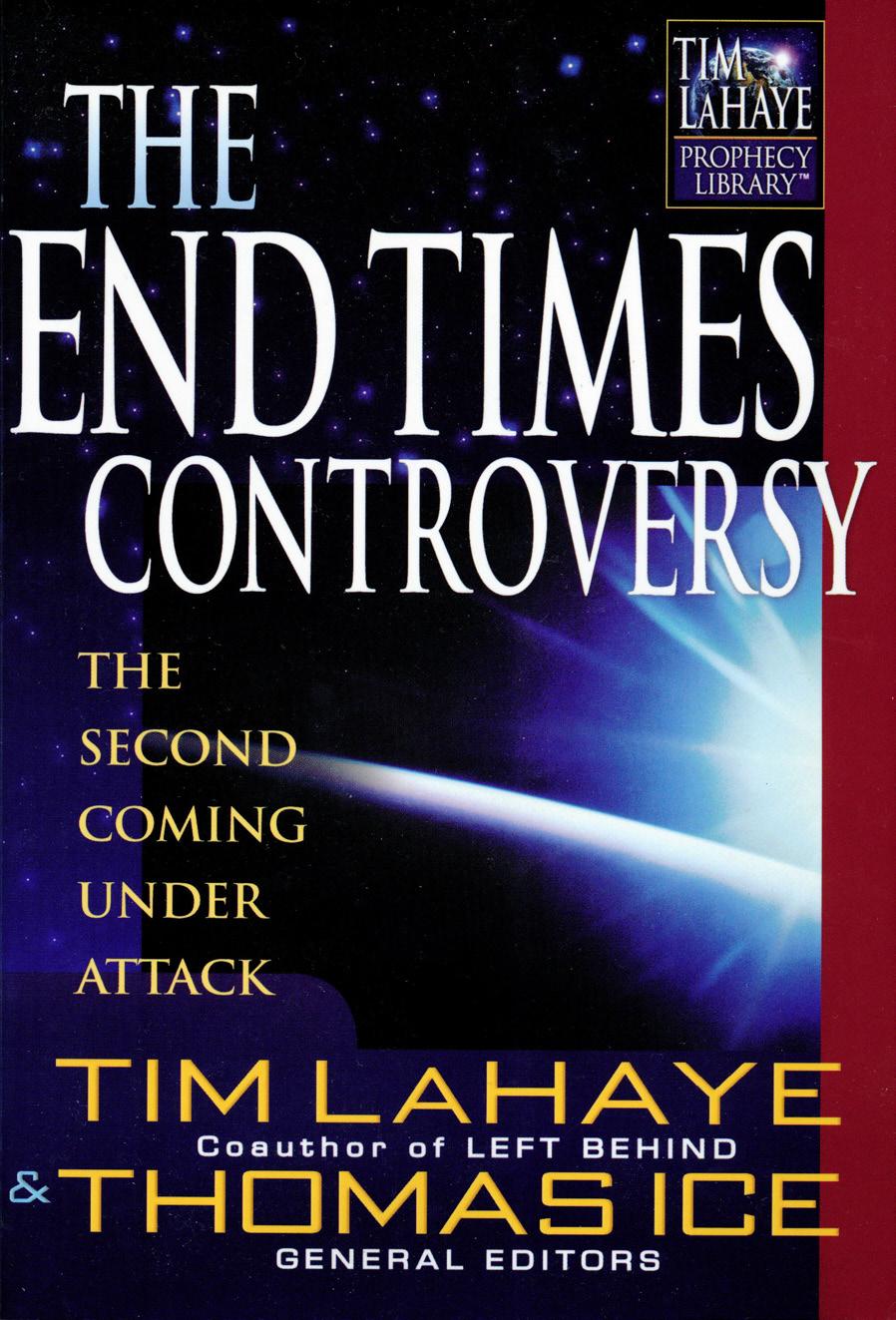
7 minute read
Perspectives: Roy Scott - Matthew 24
Perspectives
The Single Coming of Jesus in Matthew 24 and Acts 1:9-11 by Roy Lee Scott
Advertisement
As he sat on the Mount of Olives, the disciples came to him privately, saying, “Tell us, when will these things be, and what will be the sign of your coming and the end of the age?” “Then will appear in heaven the sign of the Son of Man, and then all the tribes of the earth will mourn, and they will see the Son of Man coming on the clouds of heaven with power and great glory. And he will send out his angels with a loud trumpet call, and they will gather his elect from the four winds, from one end of heaven to the other. From the fig tree learn its lesson: as soon as its branch becomes tender and puts out its leaves, you know that summer is near. So also, when you see all these things, you know that he is near, at the very gates. Truly, I say to you, this generation will not pass away until all these things take place. Heaven and earth will pass away, but my words will not pass away.” (Matt 24:3, 30-35 ESV)
In our previous article, we saw that in Acts 1:9- 11 we had testimony of Jesus’ coming by a reliable second-hand source, namely, the two men in white. In Matthew 24:1-51, however, we have a different source testifying to Jesus’ coming—Jesus Himself. Jesus was and is God, and therefore He cannot lie; however, we must be very careful here and fully understand what it means to say that Jesus cannot lie. Any information given by Jesus is and must be perfect, and therefore any question answered by Jesus cannot be a lie.
Now there is a facet of Jesus not telling a lie that can be very subtle, tricky, and easily overlooked—lies of omission. Not correcting pre-existing misconceptions is an example of a lie of omission. Consider a person asking a question of Jesus, and inherent in that question was a misunderstanding of the truth or a demonstrated ignorance of all the relevant facts and details on the part of the person asking the question. If Jesus was to answer that question and not correct the person’s misunderstanding or ignorance of the truth, then by definition Jesus would be guilty of a lie by omission.
In other words, to put it more succinctly, in order to avoid a lie by omission Jesus must answer the question that is being asked of Him according the actual truth, not according to the inquirer’s misunderstanding of the truth. Anything less would allow the person asking the question to walk away thinking that their question has been answered according to their understanding of the facts, when in fact it has not been answered in such a way. That person would walk away thinking that their unknown misconceptions of the facts are, in fact, correct, since Jesus’ answer did nothing to indicate that there were any misconceptions inherent in the question being asked. This concept of lies by omission, set against the highest standard of Jesus Himself, is crucial to a proper understanding and analysis of Matthew 24:1-51. For indeed, in Matthew 24:3, we have the disciples asking Jesus, “Tell us, when will these things be, and what will be the sign of your coming and of the close of the age?” As described above, Jesus’ answers must be free from any lie, including any lies of omission. Matthew provides a long, detailed answer to the disciples’ question regarding “these things,” culminating in His coming and the “close of the age.” Jesus then says in v. 34 that all of the things just described would occur within the generation of those hearing Jesus. (Rather than indicating an additional coming, Matthew 24:36- 51 describes the specific time frame of His coming, in contrast to the general time frame of “this generation” that was just presented in verse 34. These two time frame explanations are connected by the word “but” in verse 36, demonstrating a contrast between the two explanations of a single coming.) Notice that the disciples querying Jesus did not ask about “this”
Roy Lee Scott Roy considers himself an amateur philosopher and is an avid computer artist. He attended the historic First Presbyterian Church of downtown Pittsburgh under Dr. Robert J. Lamont. He received his BA from the University of Pittsburgh in 1980. email: zeno171717@yahoo.com 407-718-4011
coming, or ask of a “first” coming. This point is easily missed but very crucial to observe. For the disciples to ask of “this” coming is to directly imply the idea that there must be another coming called “that” coming. Similarly, to inquire of a “first” coming, one must necessarily have in mind a “second” coming. For if someone has in mind only one coming, then they would simply ask of the (or your) “coming,” that is, the single and only coming they understood there would be. There would be no need at all to speak of there being a “first” coming without there also being a “second” coming in mind.
In order to have a yet future coming of Jesus—a coming that would be 2,000 years after Jesus walked the earth—that coming must be referenced in Jesus’ answer to His disciples to avoid a lie of omission. Yet there is no additional coming mentioned in Jesus’ answer other than the coming that was to occur in their generation. Recall that the disciples asked Jesus about a coming they called “your” coming, not “this” coming, or a “first” coming, which would indicate that they had additional comings in mind. But Jesus did not correct the disciples’ single coming concept, and, as far as the disciples were concerned, when they walked away there was only “one coming”—a coming that was to occur within their generation. If there was to be an additional coming that is to occur sometime in our future, then Jesus let those disciples walk away without any knowledge of that additional coming, but rather, with the erroneous concept of a single coming that would occur before their generation ended. This, without doubt, would have been a lie of omission on Jesus’ part. But we know that Jesus would not have done that. Therefore, the disciples’ concept of a single concept must be correct.
In conclusion, we also read in Matthew 24:30 a direct reference to the “coming on the clouds,” a topic we examined in our previous analysis of Acts 1:9-11. This ties together the “coming” of Acts 1:9-11 with the “coming” of Matthew 24:1-51 and shows them to be one and the same “coming.” However, to support this claim, we must first deal with a non-literal and errant translation of the first part of Matthew 24:30. Note the ESV’s translation: “And then will appear in heaven the sign of the Son of Man” A literal translation reads, “And then will appear the sign of the Son of Man in heaven” 1 (The KJV, ASV, and RSV follow this literal translation). This changes the meaning of the verse from saying that a sign of the Son of Man is to appear in heaven, to there being a sign that the Son of Man is in heaven. 2 It is not the sign that is in heaven, but the Son of Man! The verse concludes “and they will see the Son of Man coming on the clouds of heaven with power and great glory.” As mentioned in our previous study of Act 1:9-11, the Old Testament has numerous examples of the phrase “coming on the clouds” referring to a “judgment coming” of God. 3 Therefore, Matthew 24:30 refers to the judgmental destruction of Jerusalem and the temple as the sign that the Son of Man is reigning in heaven. 4 This dual reference to “coming on the clouds” ties together perfectly the coming of Acts 1:9-11 with the coming of Matthew 24:1-51 as one and the same “coming.” Also, the “coming on the clouds of heaven” in verse 30 brings further clarity regarding the reference to the “manner” of the cloud in Acts 1:11; namely, the reference is not to a physical cloud in the sky. The cloud was to originate in and be a “cloud of heaven” where the Son of Man is reigning. One must also remember that in Matthew 24:34 Jesus said that His coming would occur within the generation of those listening to Him. This fact, along with the realization that Matthew 24:1-51 and Acts 1:9-11 refer to the same coming, provides further evidence that the coming of Acts 1:9-11 was to occur within the lifespan of those present and to whom Christ was speaking. Therefore, the same singular “coming” spoken of in Acts 1:9-11 and Matthew 24:1-51 is not a “coming” that will occur in our future, for indeed, it has already occurred. V

1. Alfred Marshall, NASB-NIV Parallel New Testament in Greek and English (Grand Rapids, MI: Zondervan Publishing House, 1986), 79 2. J. Marcellus Kik, An Eschatology of Victory, (Phillipsburg, NJ, P&R Publishing, 1971), 137 3. Ibid., 140-143 4. Ibid., 137






